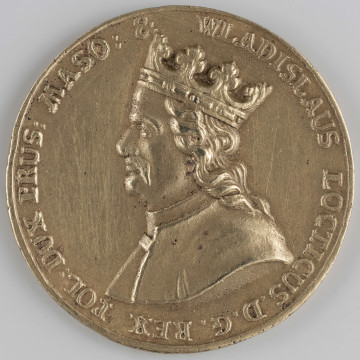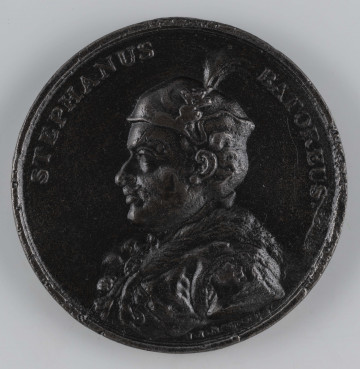
Władysław Łokietek - Kajetan Sołtyk's entourage
1790 — 1810
National Museum in Lublin
Part of the collection: Polish medallic art from the 16th to the 17th c.
Established by King Stanisław August Poniatowski in 1766 or 1767, the medal ‘Diligentiae’ Pilność) was initially awarded to outstanding cadets of the Knights' School, and since 1784 also to top students of other public schools in the Republic of Poland.
The obverse of the medal is decorated with a crowned royal monogram in a laurel wreath – a symbol of the award for victory in battle, as well as for achievements in other areas of life. The reverse bears the horizontal inscription ‘DILIGENTIAE’ surrounded by an oak wreath, symbolising the strength and courage of the recipient. The medals were struck at the Mint of Warsaw, in silver and gold, their authorship being attributed to the Polish monarch's court medallist, Jan Filip Holzhaeusser (1741-1792). It is said that the king's wish was to make holes in the medals under the crown to thread them onto ribbons. It is also interesting that the same motif of the royal monogram under the crown in a wreath can be found on other award medals of Stanisław August Poniatowski, which were given to the best horsemen among the royal pageants – ‘Equiti Dextero’, and to meritorious artists – ‘Solerti’. Among them are known variants of the stamp with fruits in a laurel wreath, as well as without fruits - an example of which is the discussed specimen. The obverse and reverse stamps of the ‘Diligentiae’ medal were taken by the Tsarist authorities to St Petersburg in 1868, together with others, after the liquidation of the Warsaw Mint, as a sign of repression following the January Uprising. They were returned to reborn Poland by the Soviet Union after the Riga peace (18 March 1921) in 1924. It is believed that in the times of Stanislaw Augustus the medal was struck in silver and gold at the Warsaw Mint. Bronze pieces were most likely minted in the 19th century in response to collectors' demand. Our silver medal may have been gilded later. It was donated to the Museum in the second half of the 1950s by Tadeusz Kałkowski, PhD, an engineer and author of a beautifully written monograph titled A Thousand Years of Polish Coinage.
Tomasz Markiewicz
Author / creator
Dimensions
cały obiekt: width: 26,5 mm
Object type
medal
Technique
gilding
Material
silver
Creation time / dating
Creation / finding place
Owner
The National Museum in Lublin
Identification number
Location / status

1790 — 1810
National Museum in Lublin

1792 — 1797
National Museum in Lublin

1792 — 1797
National Museum in Lublin
DISCOVER this TOPIC
Museum of King Jan III's Palace at Wilanów
DISCOVER this PATH
Educational path